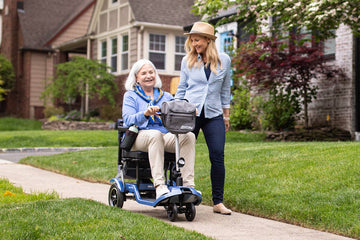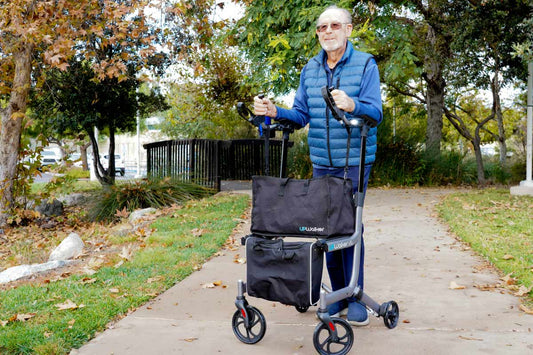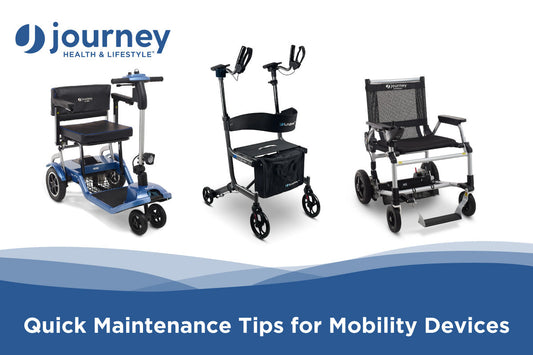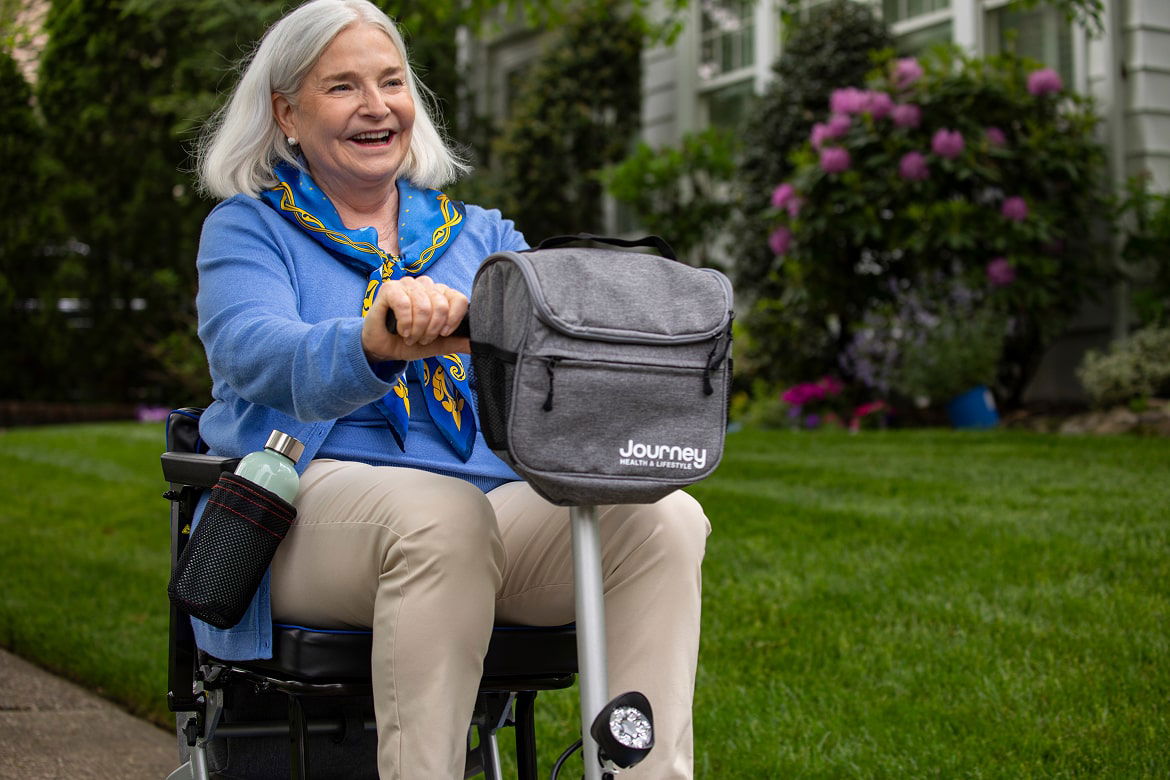M-F 9:30am - 7pm EST
Mobility-Friendly Travel: Essential Tips for a Smooth Journey
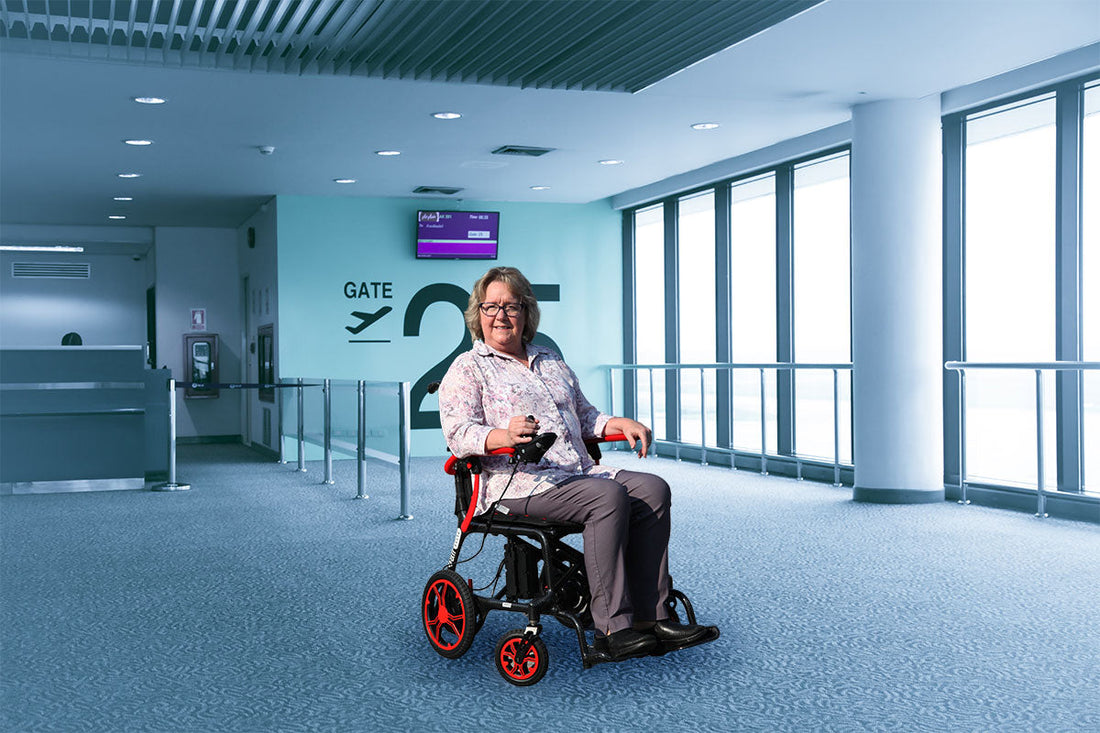
Traveling with limited mobility presents unique challenges, but with thoughtful preparation and the right mindset, it’s possible to explore the world safely and comfortably. Whether you use a wheelchair, scooter, or other mobility aid, these tips will help you plan a rewarding journey filled with adventure, comfort, and confidence.
Choosing Accessible Destinations
Consider places known for accessibility, such as U.S. national parks with accessible trails and scenic routes. Explore cities like Berlin, Sydney, and Munich, which offer inclusive public transportation and accessible attractions. Cruises are a popular option, as many ships are designed for easy navigation and offer accessible shore excursions.
Plan for a Better Travel Experience
Start researching early to plan for an enjoyable travel experience. Begin planning your trip well in advance to secure accessible accommodations and services. Early planning gives you time to address potential barriers and avoid last-minute stress.
Research destinations, hotels, and attractions in advance. Look for detailed accessibility information on official tourism websites and travel platforms. Read reviews from travelers with mobility challenges for firsthand insights. Accessible rooms are often limited, so reserve as far in advance as possible to secure your preferred option.
Specialized websites, forums, and apps can be very useful. Resources like accessibleGO, Wheel the World, and Google Maps’ accessibility filters give you detailed information about what to expect. Use travel forums and social media groups to ask questions and get recommendations. Check user-generated photos and reviews to verify accessibility claims.

"This chair allows me to live my life. It gives me a chance to go on vacation with my husband. Freedom is a great thing. Without my Zoomer I would not get to travel now that I am retired." - Nan
Contact Hotels and Attractions Directly
Call ahead to confirm specific accessibility features (e.g., ramps, elevators, roll-in showers, door widths). Ask detailed questions and request photos if needed to ensure your requirements are met. Don’t rely solely on online listings. Direct communication could help prevent unwanted surprises and delays.
Create a Flexible Itinerary
- Build in extra time and backup plans for each day in case of unexpected barriers (e.g., broken elevators, construction).
- Identify alternative routes, secondary accommodation options, and local accessibility services.
- Use interactive maps and travel apps to plan accessible routes and activities.
Get to Know Local Accessibility Standards and Rights
Research accessibility laws and standards in your destination country/city. Understand your rights as a traveler with a disability and know who to contact for support. Consider connecting with local disability organizations or accessible tour operators for guidance.
Pack Smart
Packing light makes it easier to maneuver through airports, hotels, and public spaces. Only bring essential clothing and items to reduce the weight and bulk of your luggage.
Select the Right Luggage
- Opt for lightweight, rolling suitcases that are easy to push or pull.
- Consider bags with 360-degree spinner wheels for maximum maneuverability.
- Use hands-free options like backpacks or crossbody bags to keep your hands available for mobility aids.
Prepare for Mobility Aid Needs
Bring spare parts for your wheelchair, scooter, or other mobility devices (e.g., extra tires, batteries, chargers). Pack a small toolkit for quick repairs on the go. Attach a tracking device (like a Bluetooth tracker) to your mobility aid in case it gets misplaced or lost during transit.
Secure Medications and Medical Documents
Always pack medications in your carry-on bag for easy access and to avoid loss if checked luggage is delayed. Bring extra medication in case of travel delays. Carry copies of important medical documents, prescriptions, and a doctor’s note explaining your mobility needs.
Organize Essentials for Quick Access
Use packing cubes or organizers to keep items sorted and easy to find. Keep frequently used items (snacks, water, chargers, personal care products) within reach in your carry-on or personal bag.
Consider Travel Comfort and Safety
Pack comfort items such as a travel pillow, blanket, or compression socks. Bring sanitizing wipes and masks for hygiene, especially in crowded places.
Book Accessible Accommodations
Look for accommodations with ramps, elevators, roll-in showers, grab bars, and wide doorways. Check for step-free entryways and accessible routes throughout the property.
Verify Accessibility Directly
Don’t rely solely on online descriptions or photos. Call the property to confirm specific features. Ask detailed questions about room layout, bathroom accessibility, and emergency procedures. Request to speak with housekeeping or maintenance staff for the most accurate information. If possible, ask for photos of the accessible room and bathroom to ensure it meets your requirements.
Explore Alternative Accommodation Options
Consider accessible vacation rentals, which may offer more space and customized features. Use specialized booking platforms that focus on accessible travel, such as accessibleGO or Wheel the World. Read reviews from other travelers with mobility needs for honest feedback about accessibility.
Confirm All Details Before Arrival
Double-check your reservation a few days before your trip to ensure all accessibility requests are noted and guaranteed. Get written confirmation of accessible features and any special arrangements you’ve discussed.
Navigating Transportation
Make transportation smoother with planning. Inform airlines of your mobility needs when booking and before your flight. Request airport assistance services, such as TSA Cares, pre-boarding, or help with security screening. Ask about procedures for storing and handling your wheelchair, scooter, or other mobility aids during the flight.

Research accessible public transportation options at your destination, such as buses, trains, and subways with step-free access. Look for ride-sharing services that offer accessible vehicles or features. Consider renting adapted vehicles if you plan to drive, or book accessible taxis in advance for reliable local travel.
On-the-Go Tips for a Smooth Journey
Use the Right Assistive Devices
- Bring mobility aids that suit your needs, such as folding canes, portable ramps, or lightweight mobility scooters.
- Ensure all devices are in good working order and easy to transport.
Know Your Rights and Local Laws
- Stay informed about accessibility regulations and your rights as a traveler with a disability in your destination country.
- Carry documentation or cards that explain your needs, especially if language barriers exist.
Prepare for Emergencies
- Keep emergency contacts and important medical information easily accessible.
- Have backup plans for transportation, accommodations, and activities in case of unforeseen barriers or delays.
Utilize Community Wisdom & Resources
Read travel blogs and join forums dedicated to accessible travel for real-time tips and honest reviews. Use travel apps that provide up-to-date accessibility information and user feedback.
Reach out to disability support organizations or dedicated travel agents who specialize in accessible travel. These resources can help with planning, booking, and troubleshooting during your trip.
Embrace the Adventure
Stay positive and open-minded! Recognize that traveling with limited mobility may require extra planning, but it also leads to unique and rewarding experiences. Connect with fellow travelers and locals for support and shared stories.
Remember: With thoughtful preparation and the right resources, the world remains full of accessible adventures waiting to be discovered. The experts at Journey Health & Lifestyle are available to help you find the right mobility solutions for your lifestyle.
For more inspiration and practical tips, visit Traveling Tips For Seniors With Mobility Devices, where you’ll find personal stories and expert advice for every stage of your journey.
